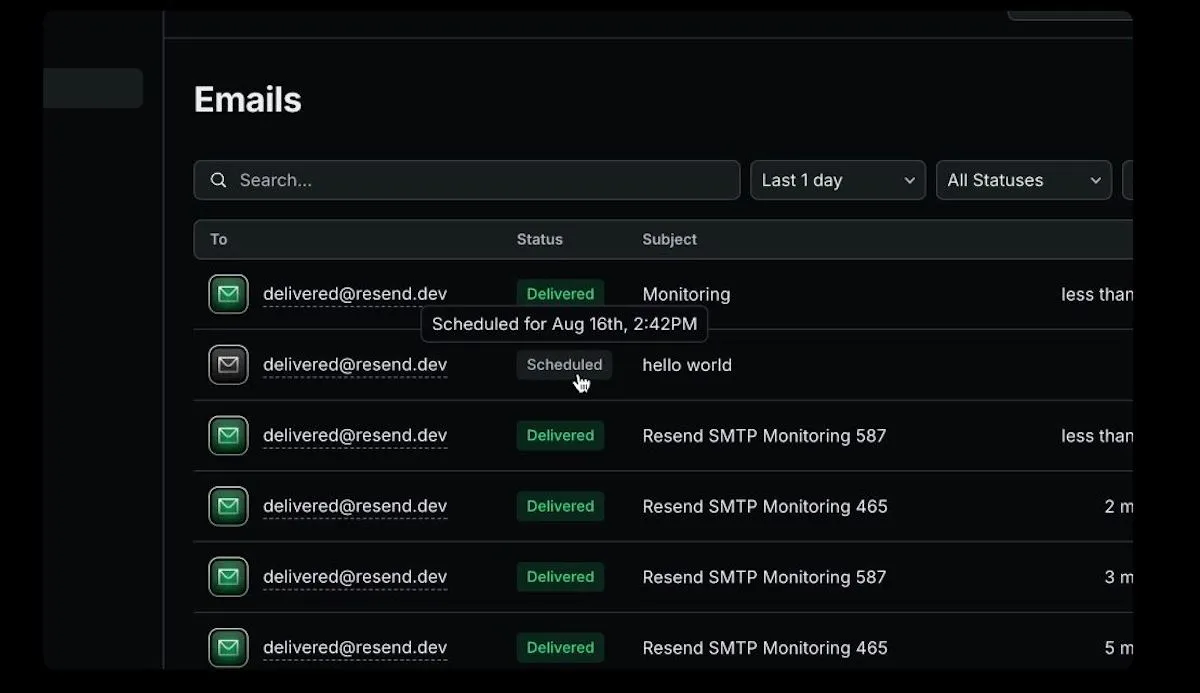Resend Introduces Email Scheduling API Feature
Resend has launched a new email scheduling API feature that allows developers to schedule and manage emails up to 72 hours in advance using various programming languages, with some limitations such as no support for attachments or bulk emails.

Resend has today announced the launch of a new email scheduling API feature.
The scheduling feature enables users to perform various time-sensitive actions, such as sending welcome emails after a specified delay or scheduling recurring emails at particular times.
You can use Node.js, Ruby, PHP, Python, Go, Rust, Java, and cURL SDK to schedule emails. For instance, using PHP SDK, you can schedule emails using the code below:
$resend = Resend::client(‘re_123456789’); $fiveMinutesAfterSubscription = (new DateTime())->modify(‘+5 minute’)->format(DateTime::ISO8601);
$resend->emails->send([‘from’ => ‘Name sales@example.com’, ‘to’ => [‘customer@example.com’], ‘subject’ => ‘Welcome’, ‘html’ => ‘Thank you for joining us’, ‘scheduled_at’ => $fiveMinutesAfterSubscription ]);The code above provides an example of how to schedule a welcome email to be sent five minutes after a user subscribes.
You can schedule emails up to 72 hours in advance. You can also cancel or reschedule emails through the Resend dashboard in the emails tab.
However, there are some limitations to the scheduling feature. Currently, it does not support scheduling emails with attachments, emails sent via SMTP, or bulk emails.
Info: Resend is an email marketing platform for developers. You can use its API to send transactional and marketing emails.


